Cari amici, il tifone Goni, che nelle Filippine chiamiamo Rolly, ha scoperchiato i tetti delle case, abbattuto alberi e distrutto linee elettriche. Centinaia di migliaia di persone sono state evacuate. Il mio Paese, ogni anno, viene devastato da tifoni e forti tempeste, ma Goni è il più forte dal 2013, quando il ciclone Yolanda uccise più di 6mila persone.
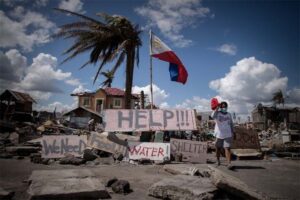
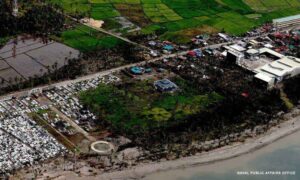
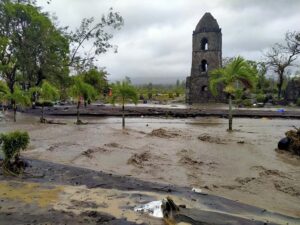
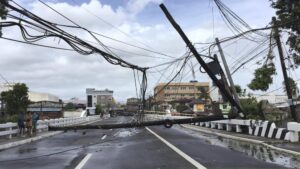
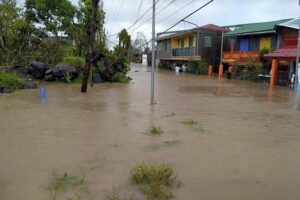
The Philippines is lashed by about 20 typhoons and storms each year. It’s also located on the so-called Pacific “Ring of Fire,” where earthquakes and volcanic eruptions are common, making it one of the world’s most disaster-prone countries.
A super typhoon named Goni (Rolly) blasted into the eastern island province of Catanduanes, Philippines with disastrous force on Sunday (1 November 2020), killing at least 10 people and triggering volcanic mudflows that engulfed about 150 houses before weakening as it blew away from the country, officials said. The said typhoon blew into the eastern island province of Catanduanes at dawn from the Pacific with sustained winds of 225 kilometers (140 miles) per hour and gusts of 280 kph (174 mph), threatening some provinces still recovering from a deadly typhoon that hit a week ago.
Typhoon Goni barreled through densely populated regions and threatened to sideswipe Manila, which shut down its main airport, but shifted southward Sunday night and spared the capital, the government weather agency said. Residents were warned of possible landslides, massive flooding, storm surges of up to 5 meters (16 feet) and powerful winds that can blow away shanties. But after hitting a mountain range and repeatedly slamming into coastal provinces, the typhoon gradually weakened, although it remained potentially deadly as it blew out into the South China Sea.
Villagers fled to safety as the typhoon approached, but the two apparently stayed put in the community in Guinobatan town where about 150 houses were inundated by volcanic mudflow. At least nine people were killed in the hard-hit province of Albay and one person was killed in Catanduanes province.
The head of the government’s disaster-response agency, Mr. Ricardo Jalad said that the typhoon could wreak major damage due to its enormous force. The Philippine weather agency reinforced those concerns, saying that within 12 hours after the typhoon’s landfall, people could face “catastrophic, violent winds and intense to torrential rainfall.”
One of the most powerful typhoons in the world this year, Goni evoked memories of Typhoon Haiyan, which left more than 7,300 people dead or missing, flattened entire villages, swept ships inland and displaced more than 5 million in the central Philippines in November 2013.
In a Manila gymnasium that was turned into an emergency shelter, COVID-19 outbreaks were an added worry of displaced residents. The Philippines has had more than 383,000 cases of the virus, the second-most in Southeast Asia behind Indonesia.
#prayforthephilippines




